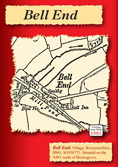 Southwick House, Hampshire (County series 1:2,500)
Southwick House, Hampshire (County series 1:2,500)
One of the most momentous decisions of the Second World War was taken in the old library at Southwick House in June 1944.
Nestling beneath the northern slopes of Portsdown Hill and just to the north of Portsmouth, Southwick House had become home of the RN School of Navigation, HMS Dryad, a stone frigate (shore establishment), moved from the coast due to the heavy bombing of its original home in Portsmouth dockyard in 1941.
 By 1943, with the planning for D-Day already underway, the house was chosen to be the location of the Advance Command Post of the Supreme Headquarters Allied Expeditionary Force. Because of this, HMS Dryad was moved out of the house onto further land requisitioned from the estate.
By 1943, with the planning for D-Day already underway, the house was chosen to be the location of the Advance Command Post of the Supreme Headquarters Allied Expeditionary Force. Because of this, HMS Dryad was moved out of the house onto further land requisitioned from the estate.
In April 1944 Admiral Ramsay, the Allied naval commander-in-chief for Operation NEPTUNE, the naval assault phase of OVERLORD, moved his headquarters to Southwick House. As D-Day approached, the house became the headquarters of the main allied commanders, including Supreme Allied Commander, General Dwight D. Eisenhower, Admiral Ramsay and the Army Commander-in-Chief General Montgomery.
The invasion of Normandy had been tentatively selected for Monday 5 June, but the weather forecast was bad, so Eisenhower ordered a 24-hour postponement. Then, later in the day, the senior meteorologist, announced to the senior commanders gathered in the old library at Southwick House that there would be a short interval of fine weather on Tuesday, 6 June.
“OK let’s go!……..With these words, the greatest invasion force that the World has ever seen prepared to launch the largest seaborne invasion in history, with nearly 5,000 landing and assault craft, 289 escort vessels, and 277 minesweepers participating. Nearly 160,000 troops crossed the English Channel on D-Day, with 875,000 men disembarking by the end of June. ‘The Great Crusade’ culminated in May 1945 with the unconditional surrender of Nazi Germany.
Southwick House remained part of the naval base, HMS Dryad, until its closure in 2004. Southwick Park is now the home of the Defence College of Policing and Guarding.
If you have an interesting story and would like to see a historical map of your area then why not let us know by emailing us.






 Cassini has decided that some of these are so spectacularly rude that they deserve wider publicity; and, to prove that they’ve existed for years and that they are real names, we’ve located each of them on a historical map and turned them into a unique set of greeting cards.
Cassini has decided that some of these are so spectacularly rude that they deserve wider publicity; and, to prove that they’ve existed for years and that they are real names, we’ve located each of them on a historical map and turned them into a unique set of greeting cards.